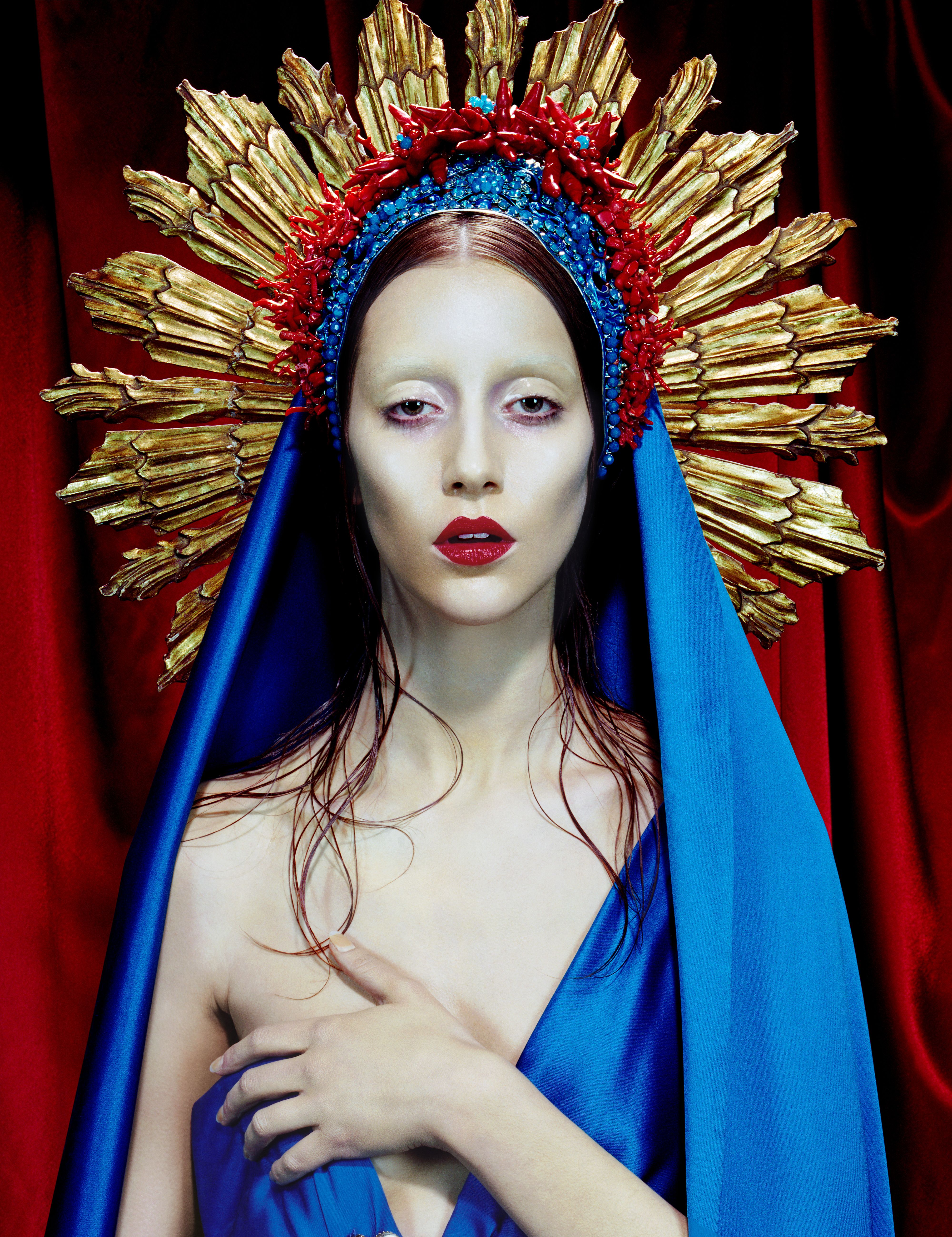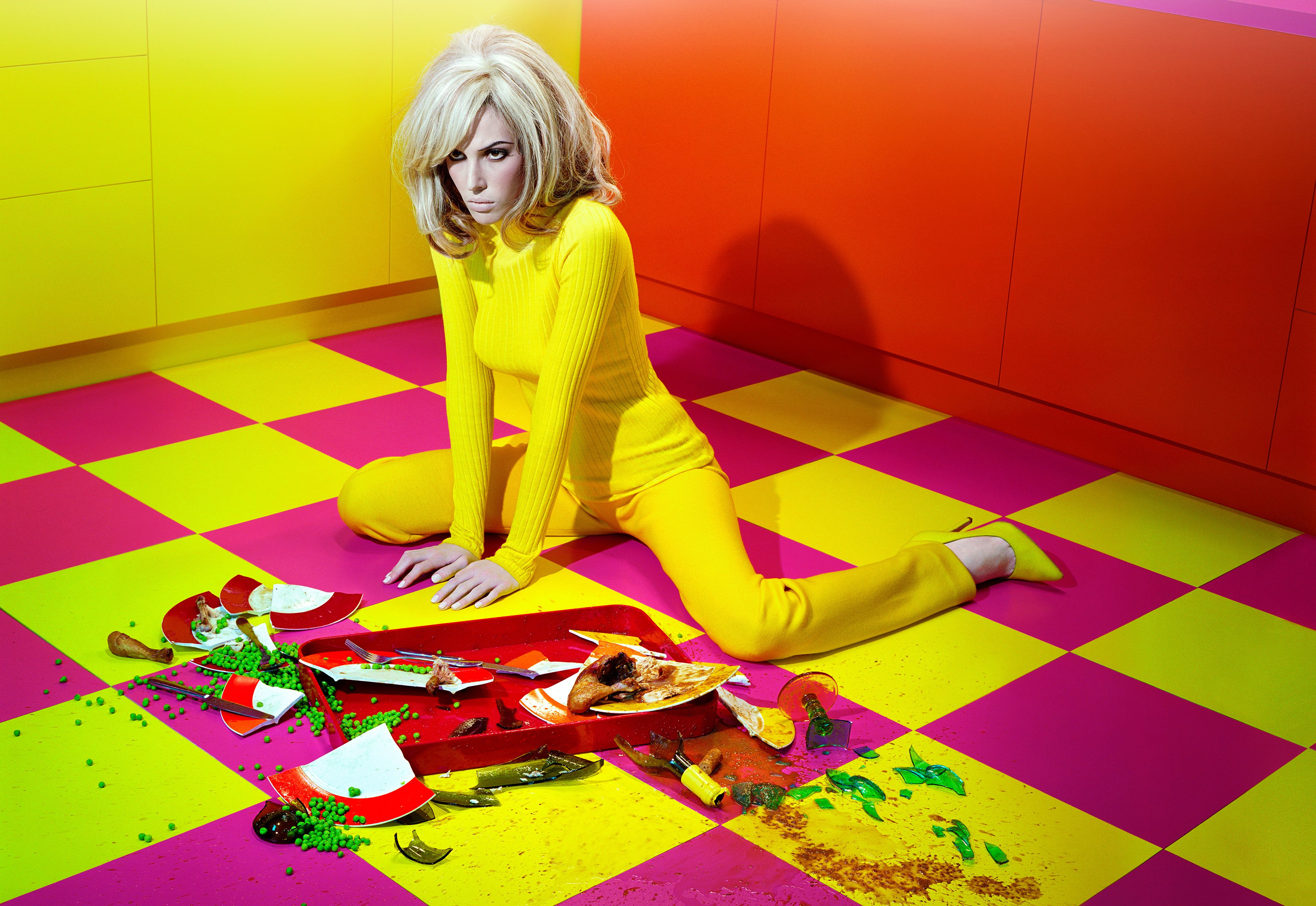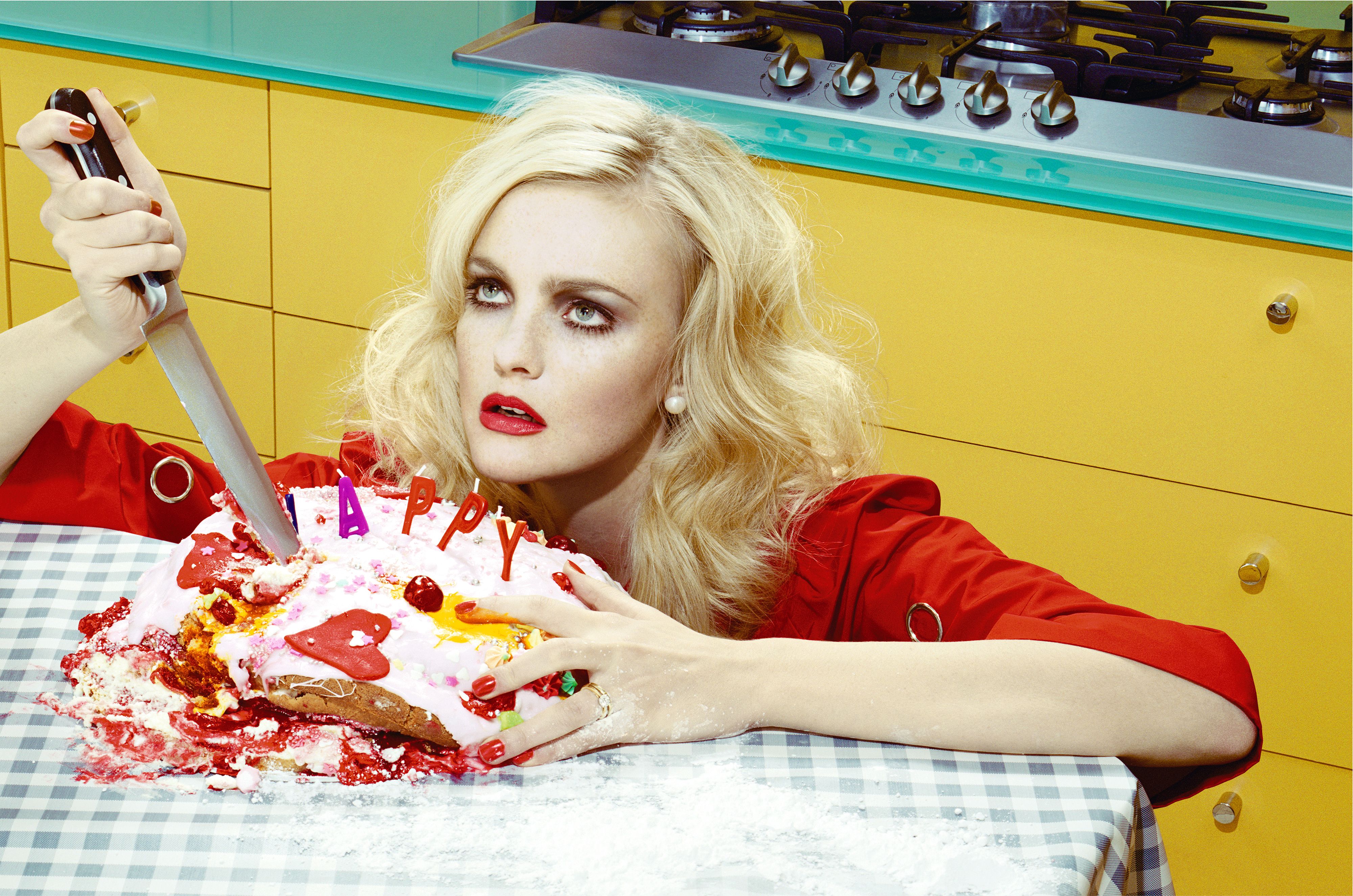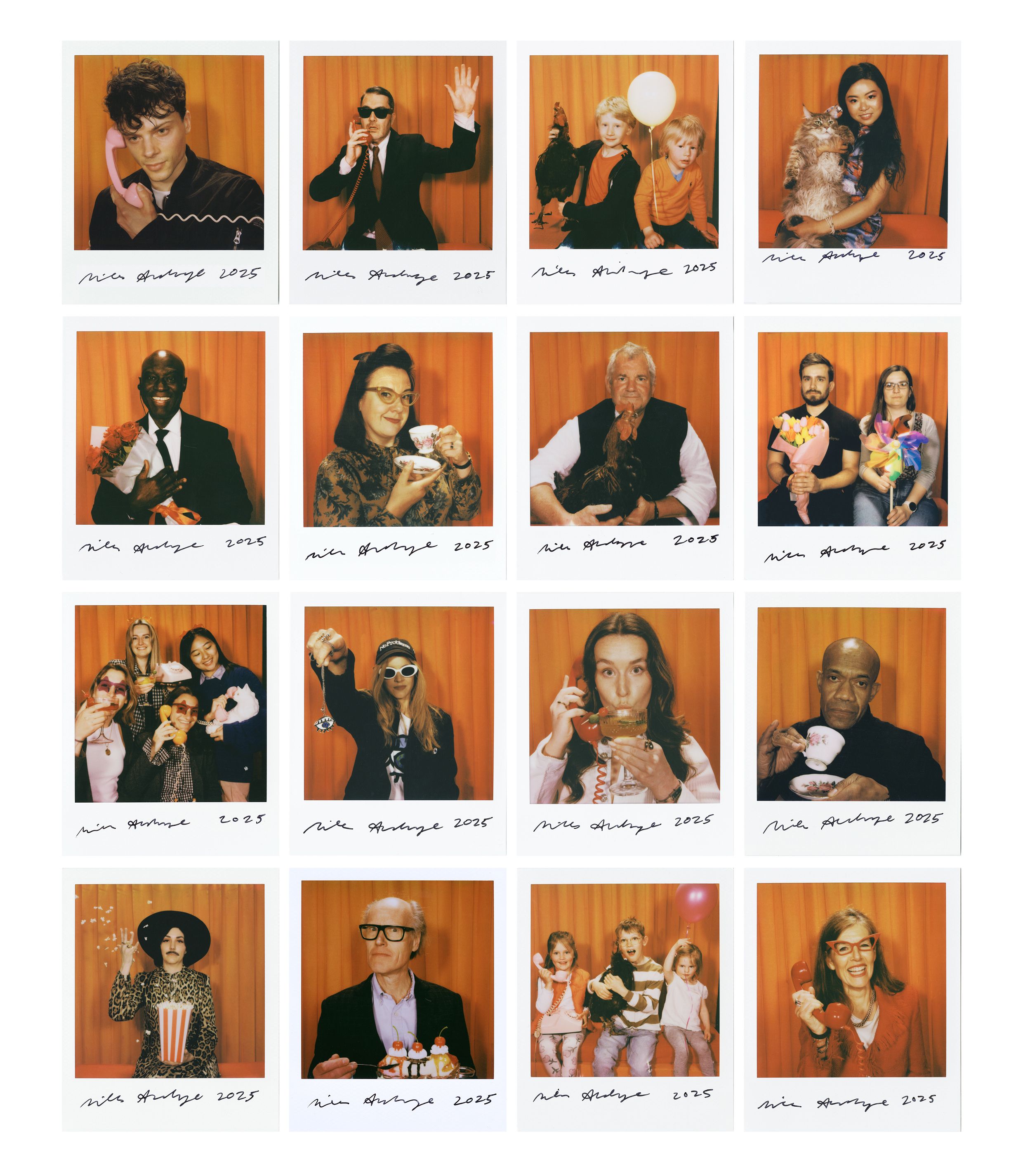
Miles Aldridge is one of the most respected image-makers of the modern era, and is widely celebrated for his explorations of the idealised woman in pop culture, often brilliantly portraying the trauma and ennui of domestic life. His vibrant cinematic aesthetic encompasses the parallel universes of art and fashion, and he has been deconstructing the beauty paradigm for over 25 years in magazines such as British Vogue, W and Harper’s Bazaar, employing dramatic lighting techniques and carefully composed scenography to create an unsettling sense of narrative tension, somewhat reminiscent of film directors like David Lynch and Federico Fellini. Most recently, he has opened up his universe to members of the general public, shooting Polaroids of anyone who would like to sit for him in his “15 Minutes of Fame” project at Sotheby’s, and he is also rumoured to be working on his first short film. In this exclusive interview for House Collective, the renowned artist discusses shooting the frozen existential moment, and tells us why he is intending to translate the timeless aesthetic of his photography to the big screen.
Where does your love of photography come from?
I consider myself not only a professional photographer, but also an amateur photographer, because everything that is included in the word amateur is about love – I love photography. It is impossible for me to do work that doesn’t reference the history of photography, or the history of cinema, because my passion was born from a love for the trickery of artificiality. When artifice was shown in the cinema, I really believed in what I was watching – I believed that James Dean was going to die in that knife fight, for example. When I got a chance to be a photographer, I never really had a problem with the artificial. I never have understood this obsession with documentary photography. I’ve always had this kind of bugbear that photography was given this really dumb role in society, to record the truth, but, of course, it’s never truth – it’s always an art directed reality.

What do you hope to communicate in the frozen existential moments you create?
Hopefully it’s the well observed moment that then translates into a kind of visual poetry about how mysterious we are, or what drives us. People often say to me: ‘Oh, your photographs of housewives seem just like mannequins.’ They’re not meant to be mannequins, they’re meant to be stopped in a moment of incredible profundity – about how banal and dumb all the things they’ve been chasing in life actually are; and now that they’ve got everything, they don’t know what they want. It’s that sort of thing. Hopefully, some of them are profound statements, but, of course, if I can kind of put in some humour and innuendo, it helps to buy you into the picture – you need those elements of comedy to lubricate the mind, to let all the kind of profound stuff come through. That’s also the reason I use pop colours – I try and create a sort of a visual feast to draw you in, but then, once you’re in there, hopefully you realise the message is a bit weird. It makes you complicit in the narrative between the artist and the audience.

You’ve recently opened your practice up to the general public with “15 Minutes of Fame” – what has that been like?
I loved it! Most of all, I think loved the sort of randomness of it – opening up the Miles Aldridge world to any one, not just beautiful models and famous people.We initially agreed that I would shoot for four days at Sotheby's, and I had no idea how it would go. We built a stage and people could book tickets online for a 15-minute slot. It was a huge hit. We shot people individually, we shot couples together who wanted to celebrate their love, we shot families with children – it was all so much fun. And, of course, you become rather like a hairdresser, or a psychologist, and wind up having these in-depth conversations with the people sat in front of you – there was the joy of people celebrating their birthdays and being in love, and then there was the sadness of people with a cancer prognosis. It was so touching.

Is it true that you are working on your first film right now?
Yes. I think the idea of a photographer becoming a director feels like a natural progression, but it's actually happened very rarely. I mean, the only one that you could really say it happened to properly was Stanley Kubrick, who was a press photographer. There are wonderful little shorts made by Guy Bourdin, of course, but you couldn't really call them films, in terms of there actually being a story.I think David Bailey was interested in making a feature, but it never happened, and I can imagine Helmut Newton being interested. It’s interesting to imagine the films these great photographers might have made.

Your photography has always had a storytelling aspect …
One of the reasons I am very drawn to making film is actually the demise of the magazine as a place to put images. When I worked for Vogue Italia, we would often create a 16 or 22-page story, and by putting all these images one after the other it was almost like you were creating a narrative. That doesn’t happen any more. There has always been a performative or dressing-up aspect to photography, but I think it took Cindy Sherman to show us all how photography and cinema are related. Her work has always played with the language of cinema – a close-up, a wide shot, an establishing shot, a reaction shot … In many ways, the whole idea of treating a photograph as if it's a film comes from her.

Is it important for you to create that sense of a backstory in your images?
I always plan my pictures pretty intensely, but I have this ability that when I put my eye into the camera I see the person for the first time through the frame, and I suspend disbelief. I really believe I am in the bathroom with that girl – I’m her boyfriend, or I’m her brother, and I’m trying to take a picture from the best angle I can. I become again the amateur working out the best angle to shoot from. Diane Arbus said something that I love – she said that when she enters a room, she never likes to adjust anything, or move anything; she’d rather position herself. I think it’s a really nice rule, so even if I’ve built a bedroom, or a kitchen – or whatever – rather than moving everything around on-set, I actually move myself to find what I am looking for. I am trying to create a fascination, so that the person trapped within the rectangle of the picture draws you into the cinematic world of somebody like Hitchcock.
Book your own private Polaroid session with Miles Aldridge here
Find out more at milesaldridge.com
Images: Immaculée #3, 2007, chromogenic print; I Only Want You To Love Me #1, 2011, chromogenic print; Home Works #7, 2008, chromogenic print; Sir Elton John for TIME magazine Icon of The Year; 15 Minutes of Fame Polaroid Sessions; Venus Etcetera (After Titian), screenprint in colours with silver ink, 2021